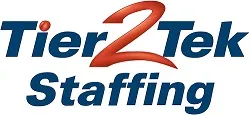Database Admin Interview Questions with Answers

Preparing for a database admin interview? Our comprehensive Q&A guide covers essential questions and answers to help you excel. From technical knowledge to troubleshooting and database optimization, these insights will equip you with the confidence to tackle any interview scenario. Whether you’re an experienced DBA or just starting out, these questions will help you demonstrate your expertise and secure your next role.
1: What is normalization?
Answer:
Normalization organizes data to reduce redundancy and improve integrity, ensuring accurate data retrieval and minimizing storage space.
2: Explain ACID properties.
Answer:
ACID ensures reliable database transactions: Atomicity (whole transaction success/failure), Consistency (data integrity), Isolation (transaction independence), and Durability (persistency).
3: Differences between SQL and NoSQL databases?
Answer:
SQL databases are structured and relational, ideal for complex queries. NoSQL databases are flexible and non-relational, suitable for large, distributed data sets.
4: How do you ensure database security?
Answer:
Ensure security through encrypted connections, strong access controls, regular updates, and security audits.
5: What is a database index?
Answer:
An index improves query speed by allowing faster data retrieval without scanning the entire table.
6: Describe a database transaction.
Answer:
A database transaction is a series of operations performed as a single unit, fully successful or fully reversed to maintain data integrity.
7: Why are database backups important?
Answer:
Backups prevent data loss from failures or corruption, enabling data recovery and business continuity.
8: What is a deadlock in databases?
Answer:
A deadlock occurs when two or more transactions block each other by holding onto resources the others need, halting progress.
9: How do you handle database scalability?
Answer:
Scalability is managed by optimizing queries, increasing hardware resources, or implementing distributed database architectures depending on load.
10: What are database schemas?
Answer:
Schemas define the structure of a database, including tables, fields, relationships, indexes, and constraints.
11: What is a join in SQL? Can you explain different types?
Answer:
A join in SQL combines rows from two or more tables based on a related column. Key types include:
- Inner Join: Returns matching rows in both tables.
- Left Join: Returns all rows from the left table, and matched rows from the right.
- Right Join: Opposite of left join.
- Full Outer Join: Combines results of both left and right joins.
12: What is data replication? Why is it used?
Answer:
Data replication involves copying data from one database to another to ensure consistency and support data recovery, load balancing, and distributed data access.
13: Describe how you would optimize a slow SQL query.
Answer:
Optimizing a slow SQL query can involve:
- Using indexes effectively.
- Rewriting the query for efficiency.
- Reducing the number of subqueries.
- Analyzing and optimizing the execution plan.
14: What is database sharding?
Answer:
Sharding is a method of database partitioning that splits large databases into smaller, faster, more easily managed parts called shards, typically distributed across multiple locations.
15: Explain database clustering.
Answer:
Database clustering involves grouping multiple servers so that they work together as a single system. This enhances the availability and fault tolerance of the database system.
16: What are stored procedures and when would you use them?
Answer:
Stored procedures are SQL code saved and executed on the database server. Use them to encapsulate logic, preserve data integrity, and improve performance by reducing network traffic.
17: How do you perform a database migration?
Answer:
Database migration involves transferring data from one system to another. Steps typically include planning, backing up data, mapping data between systems, executing the transfer, and testing post-migration to ensure data integrity and functionality.
18: What are triggers in a database?
Answer:
Triggers are automatic actions initiated in response to specific changes or events in a database. They’re used for maintaining consistency, enforcing business rules, and updating dependent fields.
19: What is the difference between DELETE and TRUNCATE commands?
Answer:
DELETE removes rows one at a time and logs each deletion, allowing for transaction control and rollback. TRUNCATE removes all rows in a table without logging individual row deletions, making it faster but irreversible.
20: What tools do you use for database monitoring?
Answer:
Tools for database monitoring can include SQL Server Management Studio, Oracle Enterprise Manager, MySQL Workbench, and third-party tools like SolarWinds, Nagios, or Redgate SQL Monitor. These tools help track performance, diagnose issues, and ensure the health of the database.
21: What is a failover?
Answer:
Failover is the automatic switching to a redundant or standby database server upon the failure of the previously active server, ensuring minimal disruption and continuous availability.
22: Explain the concept of database partitioning.
Answer:
Database partitioning involves dividing a database into distinct segments to improve manageability, performance, and availability. It can be done horizontally (rows) or vertically (columns).
23: How do you manage transaction logs?
Answer:
Transaction logs are managed by ensuring they are backed up regularly to prevent data loss and configuring settings to optimize the log’s size and performance impact on the database.
24: What is database mirroring?
Answer:
Database mirroring is a technique for increasing data availability by maintaining a copy (mirror) of a database on a different server, which can be rapidly promoted to active status in case the primary server fails.
25: Describe how you would recover data after a system failure.
Answer:
Data recovery after a system failure involves:
- Restoring backups.
- Applying transaction log backups to bring the database to the most recent state.
- Checking integrity and consistency of the restored data.
26: What is real-time data processing and how is it handled?
Answer:
Real-time data processing involves immediate processing of data as soon as it is acquired. It is handled using tools capable of stream processing, like Apache Kafka or real-time database solutions.
27: What are views in SQL and why are they used?
Answer:
Views are virtual tables in SQL that display data from one or more tables. They are used to simplify query execution, enhance security by restricting data access, and abstract underlying data changes.
28: How do you ensure data integrity?
Answer:
Data integrity is ensured through constraints (e.g., primary keys, foreign keys), transaction controls (e.g., commit, rollback), and database triggers to maintain consistency and accuracy of the data.
29: What are the best practices for database backups?
Answer:
Best practices include:
- Regularly scheduled backups.
- Storing backups in multiple locations.
- Testing restore procedures periodically to ensure data can be effectively recovered.
30: Explain how database encryption helps secure data.
Answer:
Database encryption transforms data into a secure format that is unreadable without decryption keys, protecting sensitive information from unauthorized access, even if data breaches occur.
31: Explain the difference between vertical and horizontal scaling in databases.
Answer:
Vertical scaling involves adding more power (CPU, RAM) to an existing machine, while horizontal scaling involves adding more machines to a network, distributing the load across multiple servers.
32: What is a composite key?
Answer:
A composite key is a combination of two or more columns in a table that can be used to uniquely identify each row in the table.
33: How do you handle database corruption?
Answer:
Handling database corruption involves identifying corrupt files, restoring data from backups, running repair utilities, and sometimes isolating corrupt data to prevent further damage.
34: What is a covering index?
Answer:
A covering index is an index that includes all the columns a query needs. It improves query performance by eliminating the need to access the main table data.
35: Describe the types of locks in database management.
Answer:
Common types of locks include:
- Shared Locks: Allow concurrent transactions to read a resource but not write to it.
- Exclusive Locks: Allow a transaction to write to a resource and prevent other transactions from accessing it simultaneously.
- Intent Locks: Indicate a future intention to place more restrictive locks on a specific unit of data.
36: What is a materialized view?
Answer:
A materialized view is a database object that contains the results of a query. Unlike a standard view, which dynamically retrieves data, a materialized view stores the query result physically and needs to be refreshed periodically.
37: How do you optimize a database’s storage?
Answer:
Optimizing storage can be achieved by compressing data, properly indexing, partitioning large tables, and archiving old data that is not frequently accessed.
38: Explain the use of cursors in databases.
Answer:
Cursors are used to retrieve, manipulate, and delete records row by row, providing granular control over each row processed. They are useful for operations where data needs to be handled one row at a time, instead of performing bulk operations.
39: What is database caching?
Answer:
Database caching involves storing frequently accessed data in a temporary storage area for rapid access. It reduces the load on the database and improves response times for data retrieval requests.
40: How do you manage large-scale database migrations?
Answer:
Large-scale migrations require detailed planning, including evaluating data dependencies, scheduling downtimes, testing migration strategies in a staging environment, monitoring during the actual migration, and validating data post-migration to ensure consistency and completeness.
Common Technologies Used by Database Admin

Database administrators leverage a variety of technologies to manage and optimize databases efficiently. Here are some of the most common technologies used in this field:
- SQL (Structured Query Language): The fundamental language for managing and manipulating relational databases.
- Database Management Systems (DBMS): Such as Oracle, MySQL, Microsoft SQL Server, and PostgreSQL, which are platforms for handling database operations.
- NoSQL Databases: Like MongoDB, Cassandra, and Redis, used for handling large sets of distributed data and for applications that require high performance and flexibility.
- Data Modeling Tools: Tools like ERwin, Microsoft Visio, or Lucidchart are used to design and implement database schemas and architectures.
- ETL (Extract, Transform, Load) Tools: Such as Informatica, Talend, and SSIS (SQL Server Integration Services), which are used for data integration from multiple sources.
- Backup and Recovery Software: Tools like Oracle RMAN, Veeam, or Acronis that ensure data durability and recovery capabilities.
- Database Monitoring Tools: Such as SolarWinds Database Performance Analyzer, Redgate SQL Monitor, or Oracle Enterprise Manager, which help in monitoring and optimizing database performance.
- Database Encryption Technologies: Tools like Transparent Data Encryption (TDE) and column-level encryption are critical for securing sensitive data within databases.
- Virtualization Technologies: Such as VMware and Docker, which are used to run multiple virtual instances of databases on single physical servers to optimize hardware use.
- Cloud Platforms: Including AWS, Azure, and Google Cloud, which offer managed database services and the ability to scale resources on demand.
Essential Expertise for Database Admin
Database administrators (DBAs) require a set of specific skills and knowledge areas to manage database systems effectively. Here are some of the common expertise that DBAs typically harness:
- Database Design: Understanding of how to structure a database efficiently, including data modeling and normalization to reduce redundancy and improve data integrity.
- SQL Proficiency: Deep knowledge of SQL, the standard language for database management and manipulation, is crucial for performing complex queries, updates, and data management tasks.
- Performance Tuning: Skills in optimizing database performance by analyzing queries and server environments to reduce response times and increase efficiency.
- Data Security: Knowledge of securing databases against unauthorized access, threats, and vulnerabilities, including the implementation of encryption and firewall settings.
- Backup and Recovery: Ability to implement robust backup procedures and disaster recovery plans to ensure data continuity and minimize downtime during failures.
- Replication and High Availability: Expertise in setting up and managing replication solutions to ensure data availability and business continuity across different geographical locations.
- Troubleshooting and Problem Solving: Strong analytical skills to diagnose and resolve database issues quickly and effectively, minimizing the impact on business operations.
- Regulatory Compliance: Understanding of relevant legal and regulatory requirements, such as GDPR and HIPAA, which govern data privacy and security.
- Cloud Technologies: Proficiency in cloud-based database management systems, including configuration, deployment, and scaling in cloud environments.
- Scripting and Automation: Knowledge of scripting languages like Python, Bash, or PowerShell to automate routine database tasks and processes.
Need to Hire a Database Admin?

If your company is looking to hire a skilled Database Administrator, Tier2Tek Staffing has the expertise and resources to find the perfect candidate for your needs. We specialize in understanding the specific requirements of the role and matching them with top talent in the field.
